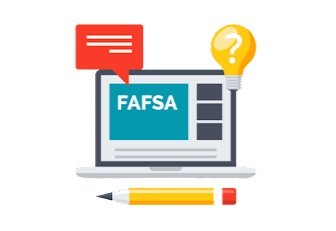Parents and guardians: When you’re 17, it can be hard to understand that going $100k into debt for a degree from an art school… may not be a sound long-term financial decision. As your student builds a college list, we highly recommend taking family finances into account, and this is a key area where you as a parent or guardian can likely offer insight and perspective that students tend to lack.
We’ve mentioned this elsewhere, but this is a great chance for students to learn some financial literacy skills by talking about family finances, what you can or can’t help with, and what they’ll be responsible for. Ideally, do so early in the process.
Here, we want to briefly talk through some core components of the college financial picture. For an in-depth, step-by-step guide, head to our Paying for College in Four Steps modules (and we offer a pay-what-you-can online video course here).
key terms and aspects of the financial aid process that students need to be aware of
FAFSA stands for Free Application for Federal Student Aid. Students need to complete this every October in order to qualify for federal aid for the following school year. Many colleges use this to calculate your Expected Family Contribution (EFC). Here’s our guide to completing the FAFSA, plus common mistakes.
The CSS Profile, developed and maintained by the College Board, is a more detailed look at a student’s/family’s finances that some schools (around 400 of them) use to determine financial aid eligibility. It’s like the FAFSA … but longer.
A Net Price Calculator should appear on a college’s website, offering a place to enter a few financial variables and estimate what the cost of attendance would roughly be for a student. (Take advantage of these calculators—most students don’t actually pay full tuition price, and for some families, high sticker price private schools can end up being cheaper than moderately priced state schools.)
Private vs local vs institutional scholarships? Each has pros and cons. For an in-depth walkthrough of each, head here.
“Need blind” vs “need aware”—some schools consider family finances as a factor in their application review (need aware), while others don’t (need blind). As students builds their list, it can be helpful to keep this difference in mind.
For more key terms and definitions, please jump to the Glossary at the end of this handbook. And if you missed it at the end of the college list section, for students in the American west, be sure to check out the WUE.









